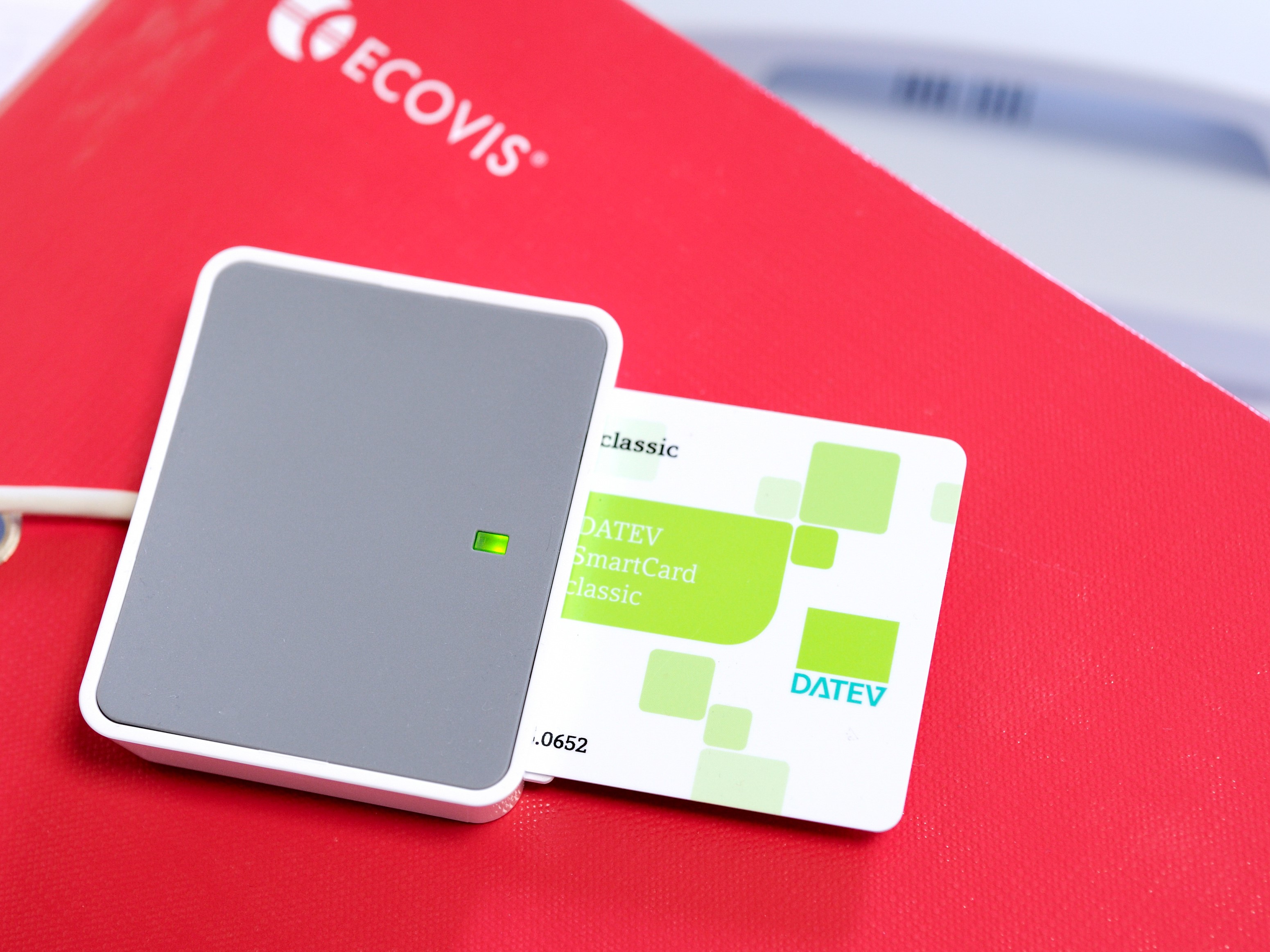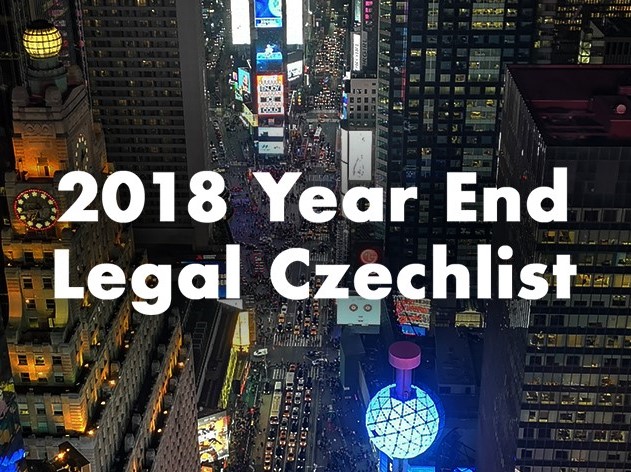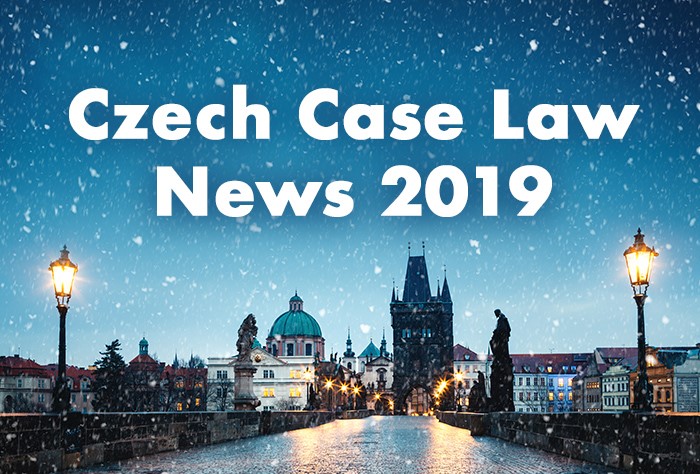Changes of the Czech Trademark Law in 2019 introduces new types of Czech trademarks
2019 Amendment to the Czech Trademark Act. New unconventional and non-traditional Czech trademarks.
After almost fifteen years, the first major amendment to the Czech Trademark Act came into effect on 1 January 2019. Act No. 286/2018 Sb. [Collection of Laws of the Czech Republic]
Nr. 286/2018 Coll. transposes EU directives and regulations in Czech legislation and aligns the system of Czech trademarks with the systems in other EU Member States.
In addition to Czech trademarks defined in Act No. 441/2003 Sb., on Trademarks, as amended, it is now also possible to register in the Czech Republic international trademarks registered pursuant to the Madrid Agreement Concerning the International Registration of Marks and the Protocol relating to this Agreement at the World Intellectual Property Organisation (WIPO) WIPO - World Intellectual Property Organization and trademarks of the European Union (EUIPO) Europen Union Intellectual Property Office. In the Czech Republic, there are currently more than 1.35 million valid trademarks, including 125,000 Czech trademarks and 85,000 international trademarks.
Abolition of the obligatory requirement for graphical representation of a trademark preventing the registration of unconventional marks
A Czech trademark does not have to be capable of being represented only graphically or visually, i.e. a graphic, word or a combined mark, as it has been until now. It is newly possible to register unconventional Czech trademarks such as motion, audio visual or sound marks, 3D marks, a mark or a hologram, i.e. anything that can be represented by available technological means. Their representation will usually be in computer file formats such as MP3, MP4 or JPG. An olfactory or gustatory mark will also be permissible, but problems with their representation can be assumed in this case. The possibility to register these trademark types was upheld by the Court of Justice in 2002 in Case Sieckmann, C-273/00. The new law amendment to the Trademark Act specifies the following trademark types:
1. Word trademark
- A word trademark (a word mark), consisting exclusively of words or letters written in Latin, Arabian or Roman letters, other standard typographic characters or a combination thereof, is represented by submitting a reproduction of the sign in standard script and layout, without any graphic feature or colour.
2. Figurative trademark
- A figurative trademark (a figurative mark), consisting of non-standard characters, stylisation or layout, or a graphic feature or colour, including trademarks that consist exclusively of figurative elements or a combination of verbal and figurative elements, are represented by submitting a reproduction of the sign, whose registration is requested, showing all its elements and, where applicable, its colours.
3. Shape trademark
- A shape trademark (a shape mark), consisting of or extending to a three-dimensional shape, showing containers, packaging, the actual goods or its appearance, is represented by submitting a graphic reproduction of the shape, also including computer-generated imaging, or a photographic reproduction. The graphic or photographic reproduction may contain different views.
4. Position trademark
- A position trademark (a position mark), consisting of a specific way in which the mark is placed on or affixed to the goods, is represented by submitting a reproduction which appropriately identifies the position of the mark and its size or proportion with respect to the relevant goods. The elements which do not form part of the subject matter of the registration will be visually disclaimed preferably by broken or dotted lines. The representation may be accompanied by a description detailing how the sign is affixed to the goods.
5. Pattern trademark
- A pattern trademark (a pattern mark), consisting exclusively of a set of elements which are repeated regularly, is represented by submitting a reproduction showing the pattern of repetition. The representation may be accompanied by a description detailing how its elements are repeated regularly.
6. Colour trademark
- A colour trademark (a colour mark), consisting exclusively of a colour without contours or of a colour combination without contours, is represented by submitting
a) a reproduction of the colour and an indication of that colour by reference to a generally recognised colour code, or
b) a reproduction showing the systematic arrangement of the colour combination in a uniform and predetermined manner and an indication of those colours by reference to a generally recognised colour code; a description detailing on the systematic arrangement of the colours may also be added.
7. Sound trademark
- A sound trademark (a sound mark), consisting exclusively of a sound or a combination of sounds, is represented by submitting an audio file reproducing the sound or by an accurate representation of the sound in musical notation.
8. Motion trademark
- A motion trademark (a motion mark), consisting of or extending to a movement or a change in the position of the elements of the mark, is represented by submitting a video file or by a series of sequential still images showing the movement or change of position. Where still images are used, they may be numbered or accompanied by a description explaining the sequence.
9. Multimedia trademark
- A multimedia trademark (a multimedia mark), consisting of or extending to a combination of image and sound, is represented by submitting an audio file containing the combination of the image and the sound.
10. Hologram trademark
- A hologram trademark (a hologram mark), consisting of elements with holographic characteristics, is represented by submitting a video file or a graphic or photographic reproduction containing the views which are necessary to sufficiently identify the holographic effect in its entirety.
11. Another type of trademark
- It does not correspond to any of the above trademark types. It is represented in any appropriate form using generally available technology, as long as it can be reproduced on the Register in a clear, precise, self-contained, easily accessible, intelligible, durable, and objective manner, so as to enable the competent authorities and the public to determine with clarity and precision the subject matter of the protection afforded to its proprietor. The representation may be accompanied by a letter.
Czech Certification mark
By analogy to the EU law (European Union certification mark), the so-called certification mark was implemented in the Czech law with more than a two-year delay. This type of trademark is designated as certification mark as early upon the submission of the application. It is capable of distinguishing the goods or services which are certified by its proprietor in respect of material, mode of manufacture of goods or performance of services, quality, accuracy or other characteristics, from the goods or services which are not so certified. Everyone who is qualified to certify goods or services for which the certification mark is to be registered and who does not carry on any business activities including the delivery of the goods or performance of the services which are being certified may apply for the registration of the certification mark. Rules applicable to the use of the certification mark must be attached to the application for the certification mark. Such rules must, among other things, contain the conditions for the use of the certification mark, including the sanctions and designation of the persons authorised to use the certification mark.
An application may be refused if the rules for the use of the certification mark conflicted with the public order or good morals or if there were a risk that the public would be misled as regards the nature or significance of the mark, in particular if it could be regarded as something else than a certification mark.
In connection with the introduction of certification marks, both the group of persons authorised to use the certification mark and the rules for using the certification mark are newly registered in the register of the Czech Industrial Property Office.
The need to file objections due to Czech trademark application refusal because of the existence of an earlier identical trademark protected for identical goods and services
Effective from 1 January 2019, the approach of the Czech Industrial Property Office to the registration of new trademarks has materially changed. Until now, the Office, ex officio, rejected to register marks that were identical with a mark that was already registered for identical goods or services, and the proprietor did not have to monitor the registered marks and could rely on the due and proper steps of the Office.
Newly, it will be up to each proprietor to monitor whether there is a pending application for the registration of a mark that is identical with its already registered mark. The new mark will no longer be registered for the sameness with an earlier mark only upon the motion of the proprietor who must submit a timely objection. Trademark proprietors will have to regularly monitor the published applications for the registration of new trademarks and react to any application for the registration of a mark that is identical with its earlier mark in a timely manner. The submission of objections will be subject to an administrative fee of CZK 1,000.
More accurate and specific definition of the trademark proprietor’s position when enforcing trademark rights
The Czech Trademark Act will newly contain express provisions prohibiting to use, during the course of trade and without the trademark proprietor’s consent, a sign as the name of a legal entity or a business name or as a part of the name of the legal entity or a business name and to use a sign in comparative advertising in a manner that is in conflict with another law or regulation.
Proprietors of earlier registered Czech trademarks will continue to have an express right to prevent the transport of goods from third countries to the Czech Republic as part of the course of trade without releasing them into circulation if such goods, including the packaging thereof, are illegally marked with a trademark which is identical with the trademark registered for such goods or which cannot be distinguished from such a trademark in its essential characteristics. This right will not apply to the marketing of the said goods in the country of the final destination.
The trademark proprietor can also prevent such preparatory acts leading to the infringement of the rights, e.g. placement of signs identical with the trademark on packaging, labels or security elements, or distribution and sale of labels, packaging, security elements or equipment showing authenticity whose use would constitute a trademark infringement.
Transfer and passage of a Czech trademark and constitutive entry in the Czech trademark register
In accordance with the principles set forth by the new Civil Code, a trademark transfer comes into effect upon the entry in the register maintained by the Czech Industrial Property Office as a public register. Any party may apply for an entry of the transfer in the register and must support it with a transfer instrument or an extract therefrom, or with another document proving a change in the trademark proprietor. Upon passage, the application must be accompanied by a document regarding the trademark passage. The trademark passage becomes effective upon the occurrence of the fact constituting the passage but is effective with respect to third parties upon the entry in the register.
Other changes in Czech procedural regulations regarding the registration, deletion and protection of rights of a trademark proprietor
The amendment naturally contains many other changes, e.g. it is no longer possible to start a procedure regarding the declaration of a trademark invalid ex officio. The revocation of a trademark has until now had ‘ex nunc’ effects, i.e. basically as of the date on which the decision on revocation entered into legal force. A trademark may now be revoked both as of the date on which the application is filed and, upon the request of a party to the proceeding, also as of the earlier date on which the reason for revocation occurred.
ECOVIS ježek, czech legal office on the most important changes in Czech law for enterpreneurs in 2019
Mojmír Ježek on the variety of changes on the czech law regarding enterpreneurs in 2019. This year will be marked not only by new obligations, but also by more rigorous monitoring of compliance with existing obligations.
If you have questions or questions about changes, you can contact us at any time.
t: +420 226 236 600 | e: mojmir.jezek@ecovislegal.cz
For more information, contact us at:
ECOVIS ježek, advokátní kancelář s.r.o.
Betlémské nám. 6
110 00 Praha 1
e-mail: mojmir.jezek@ecovislegal.cz
www.ecovislegal.cz
About ECOVIS ježek advokátní kancelář s.r.o.
The Czech law office in Prague ECOVIS ježek practices mainly in the area of Czech commercial law, Czech real estate law, representation at Czech courts, administrative bodies and arbitration courts, as well as Czech finance and banking law, and provides full-fledged advice in all areas, making it a suitable alternative for clients of international law offices. The international dimension of the Czech legal services provided is ensured through past experience and through co-operation with leading legal offices in most European countries, the US, and other jurisdictions. The Czech lawyers of the ECOVIS ježek team have many years of experience from leading international law offices and tax companies, in providing legal advice to multinational corporations, large Czech companies, but also to medium-sized companies and individual clients. For more information, go to www.ecovislegal.cz/en.
The information contained on this website is a legal advertisement. Do not consider anything on this website as legal advice and nothing on this website is an advocate-client relationship. Before discussing anything about what you read on these pages, arrange a legal consultation with us. Past results are not a guarantee of future results, and previous results do not indicate or predict future results. Each case is different and must be judged according to its own circumstances.















